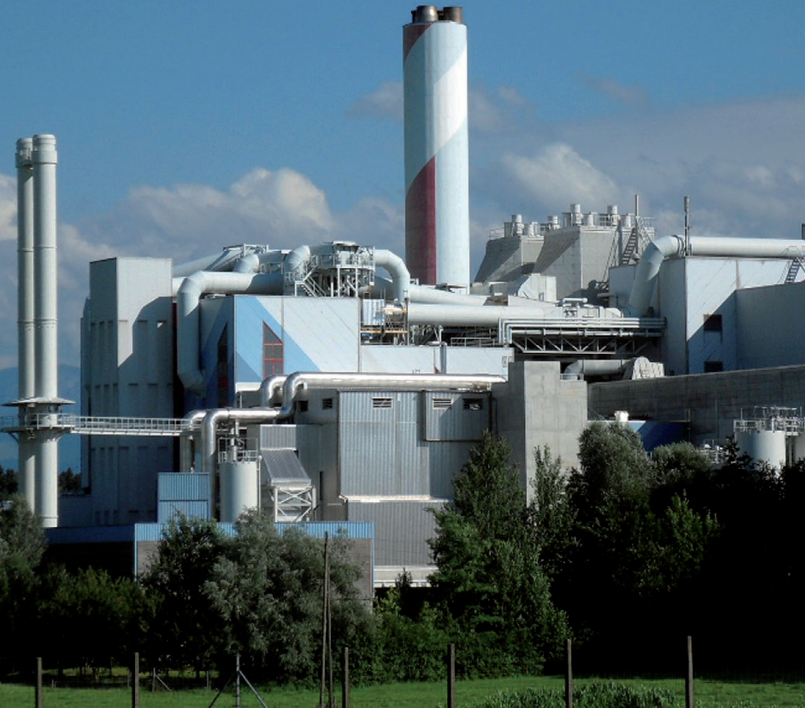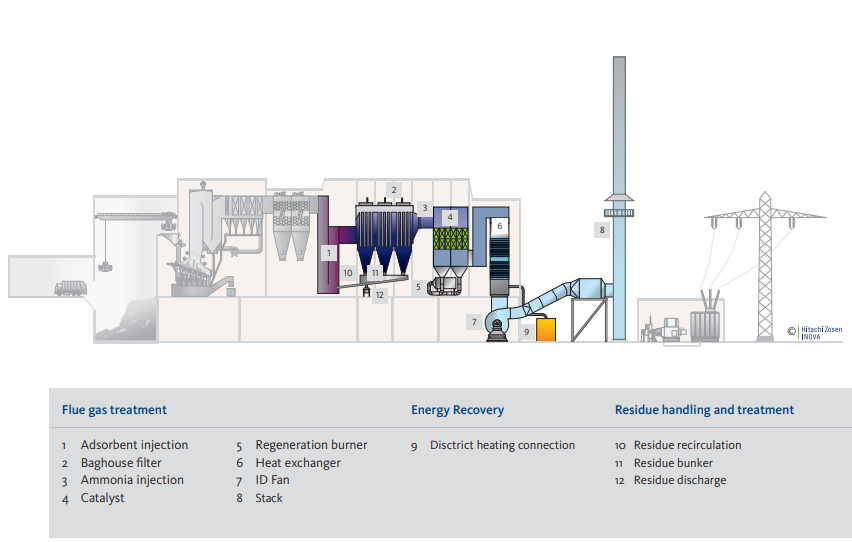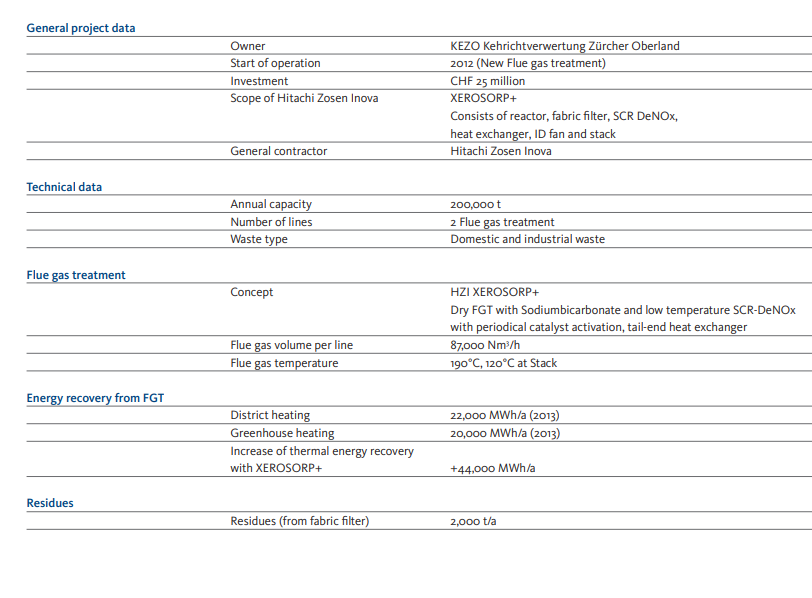Hinwil / Switzerland
Hinwil / Switzerland
Kezo Hinwil replaces flue gas treatment system and increases energy efficiency with new effluent free XEROSORP+ technology.

The three flue gas treatment units at KEZO Hinwil installed in 1991 and 1995 used a combination of wet cleaning, effluent evaporation and SCR DeNOx, and were replaced in 2012 by two lines with Kanadevia Inova’s new XEROSORP+ process.
Pioneering the new technology
Swiss thermal waste treatment plants previously relied on wet flue gas treatment (FGT) systems. Since no effluent discharge was possible at the Hinwil site, KEZO applied an energy consuming waste water evaporation. To improve its energy efficiency, KEZO took the lead by changing over to new technology using Kanadevia Inova’s XEROSORP+ process.
Stringent requirements for the new plant
The new effluent free system was designed to combine optimum energy efficiency with economically viable operation, while at the same time ensuring maximum availability and keeping emissions to a minimum, and, in so doing, to drive a technology change. Other reasons behind the decision to award the order to Kanadevia Inova included the little space required and the very short transition period.
Optimized flue gas cleaning
The XEROSORP+ process consists of a reactor, fabric filter, SCR-DeNOx, and heat exchanger. Flue gases from all three combustion lines are mixed together and then split between the two new, identical XEROSORP+ lines. Sodium bicarbonate and lignite coke are injected into the flue gas as it enters the reactor. Static mixers in the XEROSORP reactor ensure the mixing of the flue gas and the adsorption of acidic pollutants, heavy metals and dioxins. In the fabric filter, the solids form a filter cake. Solids collected in the filter bags are removed cyclically by pulse-jet cleaning. Most of the solids are recycled to the XEROSORP reactor to achieve a very low excess ratio of unused additives. A part of the solids are extracted to the residue silo. The flue gases then pass without temperature change through an SCR-DeNOx system, where nitrous oxides are reduced by injected ammonia. The low-temperature catalyst can be thermally regenerated while the system is in full operation with a low burner capacity. The cleaned flue gases then go through a heat exchanger for further energy recovery and are released by the stack.
An idea becomes reality
The project at KEZO Hinwil started out ambitious in every respect, but even the high expectations were exceeded. Emissions are below the guaranteed level, operating costs are below expectations, and the unit was built with 60% less
space required than a conventional FGT plant in just 15 months following the contract signature. The transition from the existing to the new flue gas treatment took less than 72 hours. An extra highlight is the increase in energy efficiency, with approx. 220 kWh more energy recovered per ton of treated waste. The installation at KEZO Hinwil opened the way for further applications of this innovative technology.

